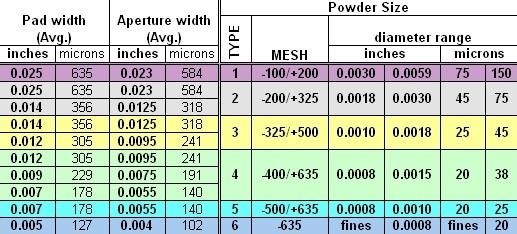Solder paste for printing follows the same guidelines as solder paste for dispensing. The good news about solder paste for printing is the apertures that are printed through are usually significantly larger than the needles used for dispensing. The BIG difference is that the paste is not as susceptible to air bubbles that would cause skips or clumping that would cause clogging.
Although stencils make a difference in the amount of paste applied, it is the paste itself that makes all the difference. Stencil release, often-called transfer efficiency or TE, can be tracked through a paste measurement system. By feeding the stencil details into the paste measurement system at onset, the system can calculate the theoretical amount of paste that should be deposited, and can create a percentage (efficiency) from measuring the amount of paste that was actually deposited.
Transfer efficiency is just now becoming something that we are tracking scientifically (read statistically). Some variables that can affect transfer efficiency are stencil type, atmospheric conditions and the paste itself.
For stencils, material makes the most difference. There are 3 types of stencils that we normally come across when visiting customers, they are Laser cut, laser cut with electro-polish, and electro-deposited (or e-fab). Also, the transfer efficiency commonly increases from laser cut, laser cut with polish and e-fab. The manufacturing cost usually increases across the three types, respectively.
Room temperature, and sometimes humidity, also affects transfer efficiency as the viscosity usually drops when solder paste is warmer, as well as the paste also becomes less tacky at warmer temperatures. Humidity affect water washable paste in the same ways, so much so that cold slump may be induced.
Most of the time, it is the paste itself, and the rosin, thickener or solvent constituents that affect the stencil release of the paste. As mentioned before, it is only in recent years that transfer efficiency is being statistically tracked to the point that the formulation may be tweaked to attain higher numbers.
More information may be found at IKB: Indium Knowledge Base.


